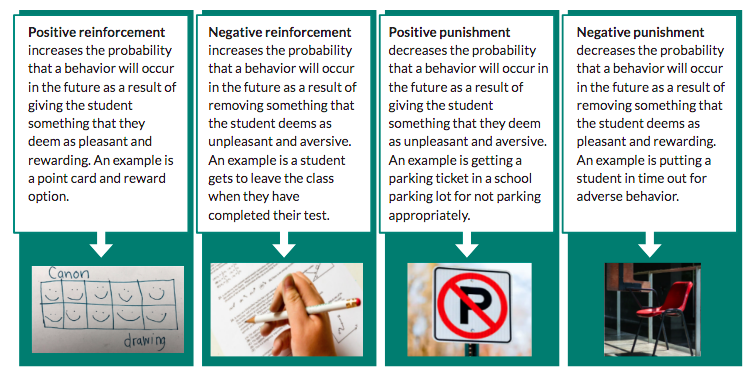The Power of Reinforcement
When responding to problem behaviors in the classroom, we can very easily find ourselves leaning heavily on punishments. However, research shows that it is more effective and productive to use positive reinforcement to increase a desired behavior than it is to use punishment to decrease an undesirable one. This is because punishment stops behavior but only reinforcement changes behavior.
Children who engage in problem behaviors are more likely to engage in an appropriate replacement behavior if we can make it more reinforcing to them than the problem behavior.
Teacher interactions should consist of no fewer than 4 positives to every negative:
- This applies to both the entire class as well as to each individual student.
- The more difficult the problem behavior, the higher the ratio of positives to negatives should be. For example, we should use 8 to 10 positives to each negative for the most difficult behaviors.
Appropriate Positive Reinforcement:
-
When Jake raises his hand before speaking in class, his teacher gives the class another marble signifying that the class had earned another minute of music at the end of the period.
-
Every day that Autumn comes prepared and finishes the starter, she is allowed to sit in a preferred seat during independent work time.
Inadvertent positive reinforcement:
-
Every time Albertine is out of her seat, her teacher tells her to sit down. The teacher can’t understand why Albertine seems to be out of her seat more than ever.
-
The teacher sends Jayden out in the hall to sit in a chair because of disruptive behavior. While in the hall, Jayden talks to other students who pass by and helps himself to some treats he finds on a cart. The teacher finds that he is disruptive again soon after he is permitted to return to the classroom.

